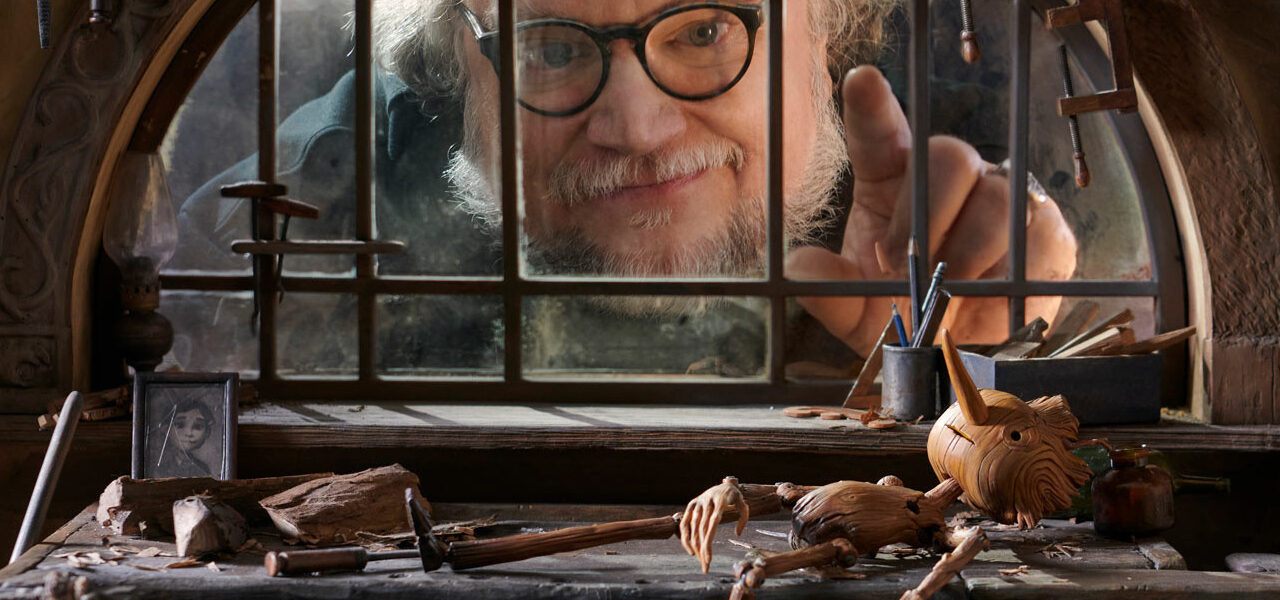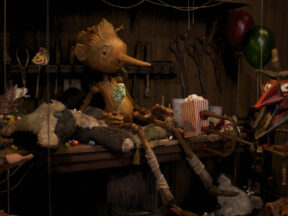

‘Pinocchio’ Director Guillermo Del Toro On The Boundaries North American Animation Should Be Pushing (Video Interview)
Netflix’s most ambitious animated feature of the year and perhaps ever, Guillermo del Toro’s Pinocchio releases globally on the streaming platform tomorrow.
INBTWN Animation, the exclusive online event partner of Cartoon Brew, caught up with del Toro to discuss the stunning work done by the film’s crew – including co-director Mark Gustafson, as well as how North American animation often falls short in addressing adult themes, and the merits of disobedience.
Plenty of ink has been dedicated to the fact that this version of Pinocchio is not explicitly a kid’s movie, unlike most animated adaptations of Carlo Collodi’s classic tale. Del Toro’s version touches on themes of loyalty, disobedience, fatherhood, fascism, and death. Those are the type of topics, del Toro says, need to be even more present in North American animation.
“If you like your entertainment childproofed, that’s a different conception,” he argues. “Animation, pushing it into a territory that is at least able to discuss these things, is something that we must do. It happens in other countries and with other authors. When you watch any Miyazaki movie or you watch The Red Turtle or you watch René Laloux or you watch so many European or Japanese animation pieces that are adult in depth and concern, you really want to push North American animation towards that.”
Pinocchio is the latest project that del Toro has spearheaded at Netflix – his thrilling Tales of Arcadia universe calls the platform home and just this year th streamer released Guillermo del Toro’s Cabinet of Curiosities.
In our conversation, the filmmaker explains why Netflix was the perfect partner for his latest animated production. “My experience with Netflix from Trollhunters and Tales of Arcadia had been fantastic. We did the three series and the feature with no interference and with full support,” he recalls.
So, when it came time to look for producers for Pinocchio, he decided he’d pitch Netflix first. And “Ted Sarandos said yes, right there in the room.”
According to del Toro, another advantage to sticking with Netflix is that because the film is hitting streaming just before the winter holiday period, families can “watch it over and over again, over the holidays even… it’s a really good advantage to a movie like this.”
Del Toro spent years developing Pinocchio, and in all that time he always knew exactly the way he wanted to make the film.
“We were always, absolutely, 100% sure that it was always gonna be in stop motion. Partially because I started in stop motion and clay animation when I was a kid,” he says. “I’ve been a supporter and an absolute nut of stop motion, and I thought it was beautifully in point with the story to make the puppet live in a world of puppets that behave and obey, and the puppet that is seen as the anomaly is actually the disobedient one. The one that has his own will.”
With the decision set in stone that his version of Pinocchio would be made in stop motion, del Toro recruited one of the best artists the medium has to offer in Emmy-winning filmmaker and Will Vinton Studios vet Mark Gustafson (supervising director, The PJs; animation director for Fantastic Mr. Fox).
“I grew up watching and imitating” the work of Vinton and his artists del Toro recalls. “The commercials we did in Mexico, we tried to do clay morphing, which Will Vinton did on Closed Mondays.”
To hear more about the film’s diversity in character design, how history influenced its sets, and how it’s possible to make a stop-motion film while working remotely, check out the full video, above.

.png)



